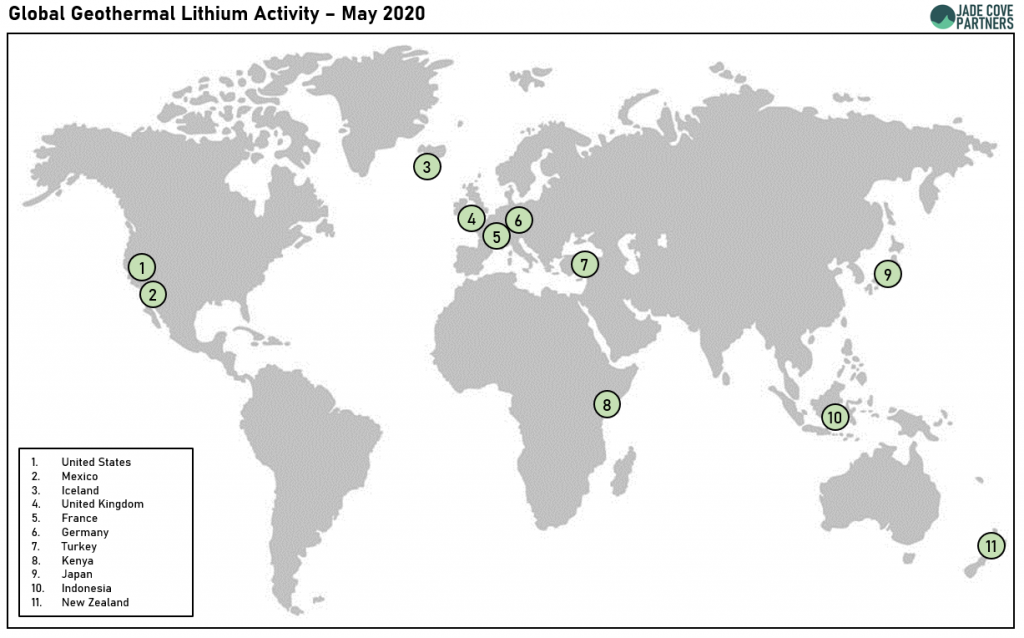Geothermal brine as the final frontier in decarbonization of the transport sector

With better energy intensity, carbon free electricity, less footprint, geothermal lithium can be the final frontier in decarbonization efforts, so an article by Alex Grant of Jade Cove Partners and colleagues.
Following a great discussion the other day I had with Alex Grant of Jade Cove Partners, he has now released a rather interesting report written in cooperation with David Deak of Marbex in Palo Alto/ U.S. and Robert Pell of Minviro in London/ UK.
In the article the authors describe how we all find ourselves in a complete transition on “how we extract, process, transport, and use energy.”
In this context, how we are deriving energy and how we convert it into electric potential, e.g. for transportation will be a key element in decarbonization efforts worldwide. Fossil fuels are thereby providing a feature that has been challenging for the renewable energy sector to provide, namely that fossil fuelds allow energy to be delivered, stored and handled in small volumes. So storing electricity is a key element going forward. For that batteries, and in particularly lithium-ion batteries will be most important.
“Lithium is a good choice for batteries because we can store an electron of electric potential on the lithium atom, while its location in the top left of the Periodic Table means that it carries along the fewest neutrons and protons. This means it carries more energy per unit mass or volume. LIBs can also be charged and discharged with high efficiency, so typically >99% of the energy put in comes back out. This is why LIBs are now used in electric vehicles.”, so the authors in the article.
The question where we get and can produce lithium for those batteries will therefore be important and in particularly how clean we can derive it. The authors describe how historically lithium was derived from either “spodumene (hard rock) and brines from high concentration, low basins in South America.” The latter with impact on habitat and freshwater, creating some controversy.
Deriving Lithium from geothermal brines has seen a lot of attention lately and the reasons seem to be relatively simple with exciting projects pushing ahead in California and in Germany. There the goal is to produce lithium chemicals and low CO2 intense electricity simultaneously.
This, so the article kills two birds with one stone – “producing low CO2 intensity lithium chemicals for LIB manufacturing and decarbonizing electricity grids simultaneously.” On how that is, is described in detail in the article. In essence it is about the energy density provided by geothermal and its efficiency. The consumption of energy in the process of deriving lithium from geothermal brine is much much less energy-intensive and co-producing power that can be used for the process itself is a pretty much unbeatable value proposition. Furthermore “geothermal lithium projects require 10,000x less physical footprint than evaporative projects to produce the same amount of lithium chemical.”
In looking at demand projections and estimates on production volume, it becomes clear that buyers of Lithium “should strongly consider favoring lithium chemicals which emit as little CO2 as possible in production.”
In essence, the authors are convinced that “Geothermal lithium projects are an exciting opportunity to accelerate the decarbonization of transportation. Geothermal lithium could be a way to reduce both the embodied emissions of manufacturing electric vehicles, and the emissions associated with charging EVs simultaneously.” … making these projects the “final frontier of decarbonization”.
For the full article, interesting charts and further insights, see link below.
Source: Alex Grant via Jade Cove Partners